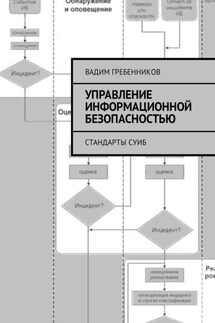IT Cloud - страница 43
vagrant @ ubuntu: ~ $ sudo docker run -d –restart = on-failure: 3 ubuntu sleep 10
056c4fc6986a13936e5270585e0dc1782a9246f01d6243dd247cb03b7789de1c
vagrant @ ubuntu: ~ $ sleep 10
vagrant @ ubuntu: ~ $ sudo docker ps
CONTAINER ID IMAGE COMMAND CREATED STATUS PORTS NAMES
c3bc2d2e37a6 ubuntu "sleep 10" 9 minutes ago Up 2 seconds keen_sinoussi
vagrant @ ubuntu: ~ $ sleep 10
vagrant @ ubuntu: ~ $ sleep 10
vagrant @ ubuntu: ~ $ sudo docker ps
CONTAINER ID IMAGE COMMAND CREATED STATUS PORTS NAMES
c3bc2d2e37a6 ubuntu "sleep 10" 10 minutes ago Up 9 seconds keen_sinoussi
vagrant @ ubuntu: ~ $ sleep 10
vagrant @ ubuntu: ~ $ sudo docker ps
CONTAINER ID IMAGE COMMAND CREATED STATUS PORTS NAMES
c3bc2d2e37a6 ubuntu "sleep 10" 10 minutes ago Up 2 seconds keen_sinoussi
Another aspect is when to consider the container dead. By default, this is a process crash. But, by far, the application does not always crash itself in case of an error in order to allow the container to be restarted. For example, a server may be designed incorrectly and try to download the necessary libraries during its startup, but it does not have this opportunity, for example, due to the blocking of requests by the firewall. In such a scenario, the server can wait a long time if an adequate timeout is not specified. In this case, we need to check the functionality. For a web server, this is a response to a specific url, for example:
docker run –rm -d \
–-name = elasticsearch \
–-health-cmd = "curl –silent –fail localhost: 9200 / _cluster / health || exit 1" \
–-health-interval = 5s \
–-health-retries = 12 \
–-health-timeout = 20s \
{image}
For demonstration, we will use the file creation command. If the application has not reached the working state within the allotted time limit (set to 0) (for example, creating a file), then it is marked as working, but before that the specified number of checks is done:
vagrant @ ubuntu: ~ $ sudo docker run \
–d –name healt \
–-health-timeout = 0s \
–-health-interval = 5s \
–-health-retries = 3 \
–-health-cmd = "ls / halth" \
ubuntu bash -c 'sleep 1000'
c0041a8d973e74fe8c96a81b6f48f96756002485c74e51a1bd4b3bc9be0d9ec5
vagrant @ ubuntu: ~ $ sudo docker ps CONTAINER ID IMAGE COMMAND CREATED STATUS PORTS NAMES
c0041a8d973e ubuntu "bash -c 'sleep 1000'" 4 seconds ago Up 3 seconds (health: starting) healt
vagrant @ ubuntu: ~ $ sleep 20
vagrant @ ubuntu: ~ $ sudo docker ps
CONTAINER ID IMAGE COMMAND CREATED STATUS PORTS NAMES
c0041a8d973e ubuntu "bash -c 'sleep 1000'" 38 seconds ago Up 37 seconds (unhealthy) healt
vagrant @ ubuntu: ~ $ sudo docker rm -f healt
healt
If at least one of the checks worked, then the container is marked as healthy immediately:
vagrant @ ubuntu: ~ $ sudo docker run \
–d –name healt \
–-health-timeout = 0s \
–-health-interval = 5s \
–-health-retries = 3 \
–-health-cmd = "ls / halth" \
ubuntu bash -c 'touch / halth && sleep 1000'
vagrant @ ubuntu: ~ $ sudo docker ps
CONTAINER ID IMAGE COMMAND CREATED STATUS PORTS NAMES
160820d11933 ubuntu "bash -c 'touch / hal …" 4 seconds ago Up 2 seconds (health: starting) healt
vagrant @ ubuntu: ~ $ sudo docker ps
CONTAINER ID IMAGE COMMAND CREATED STATUS PORTS NAMES
160820d11933 ubuntu "bash -c 'touch / hal …" 6 seconds ago Up 5 seconds (healthy) healt
vagrant @ ubuntu: ~ $ sudo docker rm -f healt
healt
In this case, the checks are repeated all the time at a given interval:








